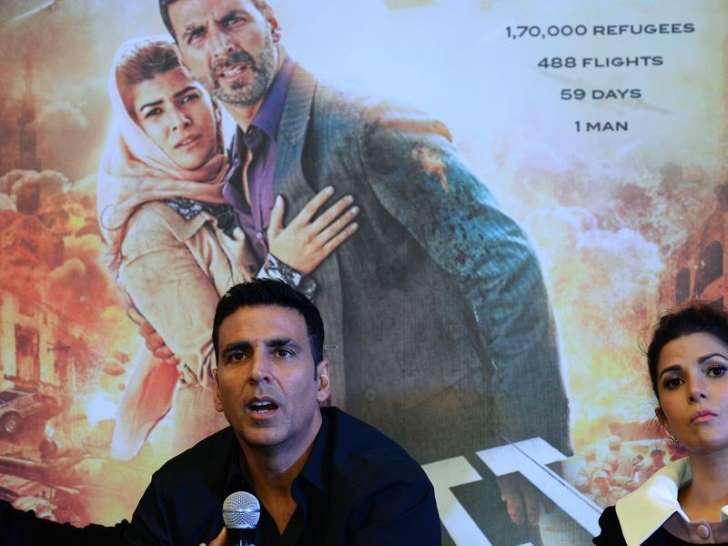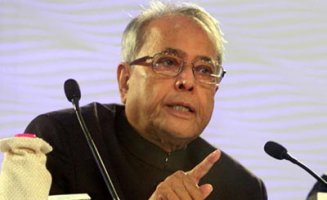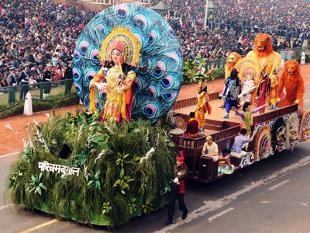January 27, 2016
MUMBAI, INDIA – I was airlifted from Kuwait by the Indian government after the Saddam Hussein invasion in 1990, and my recollection of an eventful six weeks is nothing like the portrayal in the Akshay Kumar-starrer Airlift currently playing to full houses.

January 27, 2016
MUMBAI, INDIA – I was airlifted from Kuwait by the Indian government after the Saddam Hussein invasion in 1990, and my recollection of an eventful six weeks is nothing like the portrayal in the Akshay Kumar-starrer Airlift currently playing to full houses.

The movie shows the Indian government as callous and incompetent. In my experience, nothing could be further from the truth; in fact, India won the everlasting gratitude of an impressionable kid by facilitating the evacuation, pulling strings with Saddam. To that extent, the patriotic chest-beating the film inspires on Gantantra Diwas is understandable; the problem is that the protagonist, businessman Ranjit Katyal, gets all the credit.
I went to see Airlift expecting to relive an important and exciting incident in my life. After all, when then Iraq President Saddam Hussein decided to flex his muscles, I was a school-going kid in Kuwait. For weeks after the invasion my family and I lived in a country that didn’t have a functioning government and where Iraqi teenagers in army fatigues roamed the streets with machine guns.
We were packed into buses that snaked through desert roads and stayed in refugee camps in a ‘No-Man’s Land’ – a stretch of desert between Iraq and Jordan. In Airlift, I hoped to relate to such scenes and say ‘Yes, I remember this incident’ or ‘This is what we went through’. But, now, after surviving the movie, I understand the importance of the disclaimer: ‘All characters appearing in this work are fictitious. Any resemblance to real persons, living or dead, is purely coincidental’.
Kumar plays Katyal, who, after Iraq’s invasion of Kuwait purportedly helps the safe passage about 1.70 lakh Indians (plus a Kuwaiti and her daughter) from Kuwait to Mumbai (then Bombay) via Iraq and Jordan. Kumar’s character, the filmmakers acknowledge, is inspired by the lives of two Indian businessmen (Sunny Mathews and HS Vedi) who played an instrumental role in the evacuation.
Director Raja Krishna Menon’s depiction of Katyal being this Moses-like figure leading all Indians through the desert in 10 buses and 15 cars is just one of the many liberties he has taken with facts. There is no way 1.7 lakh Indians could have been pulled out because there were at most 1.2 lakh there in the first place. And I remember clearly that not all of us were extracted at one go.
Iraq invaded Kuwait on August 2, 1990. It was a Thursday and a school holiday – we didn’t know it then, but that was effectively the end of the school year. We could no longer cycle through the empty parking lots and souks, nor play football in the ground adjacent to our apartment. We also stopped going to the beach – news had spread that Saddam’s boys had mined the beaches. But life for the elders in the family was as usual: They drove cars and went to work. Thanks to good India-Iraq ties, cars driven by Indians were not stopped – unless it was a top-end one with serious bling on it that caught the fancy of an Iraqi child soldier. There was a shortage of food, but here again, Indians were allowed to travel and buy food from wherever they could find it.
On September 19 or 20 we left Kuwait on a bus to Basrah in Iraq, where we halted for a few hours at night. From there we went to Baghdad where we changed buses. Our next halt was for a night in a camp in the middle of the desert. A sandstorm hit the camp that night, covering everything in its path, including tents and buses, under layers of sand. The following morning we went to the ‘No-Man’s Land’ and for the next 10 days, tent number A-87 was home. The United Nations provided us sheets and blankets (nights in the desert can get very cold). The UN also distributed food from trucks and the Red Cross/Red Crescent set up medical tents. From there we left for Amman and it was after spending a day in the queue that we got tickets for Mumbai.
The trouble I have with Airlift is not so much that the evacuation story it has told is different from mine, but that in its bending of facts, it is recreating an incident to its convenience. In other words, the filmmakers are ‘creating history’. In its dramatization of events to suit the grammar of a screenplay certain incidents have been magnified and New Delhi has been unjustly vilified.
Airlift cunningly taps into the general resentment towards Indian politicians and bureaucrats. It is dismissive of New Delhi’s efforts to ensure the safe passage of Indians from Kuwait. But the fact remains that the then foreign minister IK Gujral met Saddam himself to negotiate the rescue, even if he was broadly panned for his pains – a photograph showing the two in an embrace quickly became infamous.
A film like Airlift is an example of what happens when governments fail to communicate their achievements and leave filmmakers to be the sole shapers of public opinion around a dramatic historic event.
However, in a nation where it is increasingly becoming necessary to wear your patriotism on your sleeve, Airlift has the right dose of desbhakti-inducing scenes and flag waving to excite you. It’s a pity about the details.
Courtesy: HT







































































































